If you ever get a chance to interact with a farmer or a gardener, you will realize that almost all of them are bothered with how to get rid of powdery mildew at a particular time of the year. And if you are a gardener, you are probably seeking out the same solution to this ‘every farmer’s nightmare.’
Powdery mildew is a common plant disease that no known plant has been reported to be immune to, and this means that your plants are not safe from this fungus.
Therefore, there is a need for you to know how to get rid of powdery mildew from your plants and ways to prevent its occurrence.
Table of Contents
What is Powdery Mildew?
Powdery mildew is a fungal disease that affects plants, fungi of the Erysiphales order cause it. Fungi that cause powdery mildew to thrive in warm and damp conditions.
Powdery mildew appears as circular patches of whitish or grayish powder on affected parts of a plant, which are usually the plant’s leaves, flowers, stems, and leaves.
When powdery mildew appears on plants, most gardeners take it to be flour and attempt to get to rid of it by dusting it off affected plant parts.
Well, dusting doesn’t get rid of powdery mildew, as it resurfaces days later and starts to cause the areas affected turn yellow due to lack of adequate sunlight; it blocks from reaching those affected parts. Powdery mildew blocks leaves and flowers from receiving sunlight and photosynthesizing.
Fungi of the Erysiphales order are host specific. Specific family attacks and infects a particular plant and cannot infect another type of plant. In some cases, these fungi get so precise that they can only strike a specific cultivar of plant.
Powdery mildew is easily transmitted from an infected plant to a healthy plant. It is transmitted from one plant to another through the wind, water, or insects in forms of pores.
These spores are microscopic and thrive in harsh weather conditions, and this makes its control very difficult. They hibernate when the environment seems uncomfortable for them and blossom when the situation becomes favorable.
Symptoms of Powdery Mildew
Powdery mildew, as the name implies, appears as patches of whitish or grayish powder on plant parts, such as the leaves, stems, flowers, and fruits. It usually appears first on the upper side of plant leaves before spreading to other regions.
Powdery mildew is rarely fatal, except for ruining plants’ aesthetics and changing the flavor of fruits and vegetables produced.
When left unchecked or ignored as some gardeners do, it spreads widely to other nearby plants. It causes plant foliage to curl, turn yellow or brown, and eventually to defoliate prematurely.
If a flowering plant or tree gets infected, powdery mildew causes it to drop its bud earlier than supposed and reduces the quality of flower produced. Therefore, it reduces the market value of cut flowers and alters the flavors of fruits and vegetables.
How to Get Rid of Powdery Mildew
The following organic ingredients help get rid of powdery mildew. But before we delve fully into discussing how to get rid of powdery mildew, let’s consider some of the necessary precautions you should take before venturing into getting rid of this parasite.
Test Each Ingredient on Your Plant
Before going ahead to spray your plant with any organic or inorganic solution, make sure to test the solution on a small portion of your plant, maybe a leaf.
Spray an adequate amount of the solution to the leaf, until the leaf drips of the solution. Allow the leaf to dry and check for results.
If the leaf changes color to brown or yellow, this means the solution is harsh for the plant. Discontinue usage immediately and try out other solutions until you find one that is suitable for your plant.
Use a Variety of Solutions
When you must have experimented with different anti-fungal solutions and found a couple of solutions that suits your plant, use them alternatively on your plant. Alternating these solutions ensure that the fungi do not build resistance.
They can build resistance to one solution, but using different solutions at different times makes it impossible or difficult for them to build resistance.
Spray Plants in the Mornings Every Per Week
It is recommended that you spray your infected plants in the mornings. This would allow the solutions to dry on them as soon as the sun comes out, and it would enable the solution to last longer on the plant.
Also, do not spray your plants more than once a week. Spray your plants once every week and continue each week if the first few treatments did not get rid of the mildew.
Remove Powdery Mildew From Leaves Before Spraying Them
Before you spray, the infected leaves use a clean and dry cloth to wipe off as much powdery mildew as you can from the leaves.
Doing this reduces the quantity of powdery mildew that runs off into the soil when you spray an anti-fungal solution to your plant. If you don’t use a clean, dry cloth to wipe the leaves, you can get rid of some mildew by rubbing leaves against each other.
Spray a Generous Amount of Solution to the Plants
When you spray your plants, do not be economical with the solution, spray a generous amount of it to the plant, and allow it to run off the leaves and other affected areas.
After you spray them, do not wipe them dry, allow them to air dry, and this will enable it to penetrate to necessary parts of the affected parts and be active as possible.
Use Chemical Anti-fungal Solutions With Caution
You must cautiously use chemical anti-fungal solutions and follow manufacturer’s instructions to avoid harming your plants in a bid to get rid of powdery mildew.
Excessively spraying chemical anti-fungal solutions to your plants can harm the plants in a variety of other ways. It can also get rid of other harmless useful organisms and agents of pollination like birds and bees, and it can also upset the soil’s pH balance.
You should, therefore, stick to the manufacturer’s instruction or safely use suitable inorganic solutions on your plant.
Now, let’s discuss how you can get rid of powdery mildew on your plants:
How to Remove Powdery Mildew on Plants
Use of Baking Soda Solution
Baking soda has a very high pH; it has a pH value of 9. Spraying infected plants with baking soda solution raises the pH level on them, thereby creating an alkaline condition that is very unsuitable for fungi to thrive in.
Anecdotal reports have that baking soda solution while reducing the count of powdery mildew on plants, also prevent its occurrence. So it serves a dual purpose for plants when it comes to powdery mildew.
How to use baking soda to get rid of powdery mildew:
Firstly, mix one tablespoon full of baking soda, with ½ tablespoon of liquid hand soap to 1gallon of water. Mix thoroughly until a consistent solution is achieved.
Pour the solution into a suitable spray can.
Using the spray can spray the baking soda solution to the affected leaves and other plant parts in the morning.
Use of Garlic Oil
Garlic is used as a fungicide to get rid of powdery mildew as a result of its richness in sulfur. Garlic oil can be prepared at home or bought commercially. For optimal effectiveness, it is recommended to be mixed with organic oil.
How to use garlic oil to get rid of powdery mildew:
You do the following if you choose to prepare your garlic oil at home by yourself. Crush about 6 to 8 cloves of garlic. Soak the crushed garlic in an ounce of neem oil or any other organic oil and an ounce of running alcohol. Allow the mixture to sit for two days.
Strain the mixture and keep the crushed garlic. Soak the crushed garlic again in a cup of water and allow it to stand for a day. Strain the mixture, and this time, you can discard the crushed garlic.
Add the first mixture of organic oil and alcohol and the second garlic water to a gallon of water. Pour the mixture into a spray can and spray your plants with it. Ensure to allow the solution runoff.
Use of Milk Solution
Milk has proven with results to be effective against powdery mildew. Previous studies carried out showed that milk significantly killed powdery mildew, even more than most chemical fungicides.
Although there has not been an empirical fact to prove how milk is so effective against powdery mildew, scientists suggest that it could be as a result of the free radicals produced by milk when exposed to the sun. The free radicals are toxic to fungi and thereby get rid of them.
How to use milk to get rid of powdery mildew:
There are two ways milk can be used to get rid of powdery mildew. The first method is to mix 40 parts o milk with 60 parts of water. Spray the solution to affected plant parts bi-weekly.
The second method is to mix an ounce of powdered milk to 2 liters of water and spray to your plants bi-weekly.
Use of Neem Oil
Neem oil is gotten from neem seed and is very effective against powdery mildew. It kills the fungi responsible for powdery mildew in less than twenty-four hours after application. It is that powerful!
Neem oil works by truncating spore production and its transportation. Neem oil is also an excellent insecticide, and since spores are transported across plants by bugs, neem oil halts the spread of spores. This makes neem oil both a preventive and curative agent for powdery mildew.
How to use neem oil to get rid of powdery mildew:
Mix three tablespoons of neem oil to a gallon of water. Pour mixture into a spray can and spray on to affected plant parts. While spraying, avoid the plant’s flowers and young buds. Spray neem oil solution to plant every week.
Use of Apple Cider Vinegar Solution
Apple cider vinegar contains acetic acid, which makes it effective in getting rid of powdery mildew. The acetic acid could be very strong for the plant leaves, so make sure to mix a suitable solution.
To do this, Mix four tablespoons of Vinegar, this should be about 5% solution, with a gallon of water.
Spray the solution on affected plants every three days.
How to Prevent Powdery Mildew on Plants
To prevent the growth and spread of powdery mildew, it requires you to reverse the conditions necessary for its growth in your garden and with your plants. These are some of the steps you can take to prevent powdery on plants.
Water the Soil Instead of the Plants
Spraying water on your plant parts instead of directly on the soil helps spread spores across plants’ leaves and other parts. So to limit the spread of powdery mildew carrying spores, do not use sprinklers, use hoses directed to the base of the plant.
Provide Enough Space Between Plants
Powdery mildew thrives in humid weather conditions, and good air circulation lowers humidity levels, thereby inhibiting the growth of fungi that causes powdery mildew. To ensure this, provide enough space between plants and avoid crowding plants.
Get Rid of Infected Plant Parts From the Onset
As soon as you notice the symptoms of powdery mildew on any plant part, you get rid of that part. Powdery mildew usually starts on the leaf, when you notice this on the leaf, trim off the affected part.
When you get rid of the affected parts, do not use it for either mulch or compost; discard them as far away as possible from your garden. This ensures that the spores do not come back to your plants and cause re-infection.
Plant Powdery Mildew Resistant Varieties
There are a wide variety of hybrid plants that are resistant to powdery mildew. These plants would be less likely to be infected, and when they do, they show lesser symptoms.
Conclusion
Powdery mildew is best gotten rid of by organic substances, although there are a good number of inorganic substances that help get rid of it.
Caution must be taken while applying these substances to ensure that the plant’s and soil’s optimal pH is not upset.

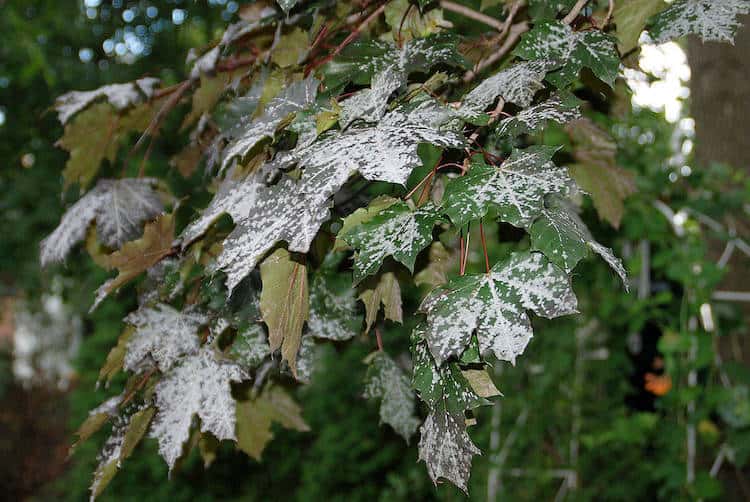
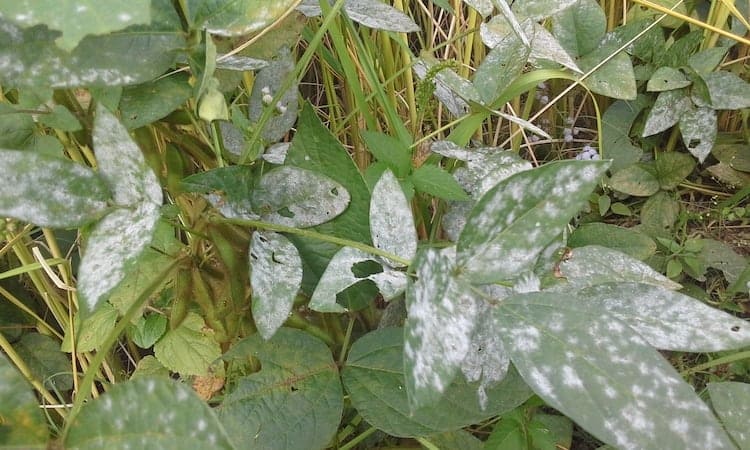
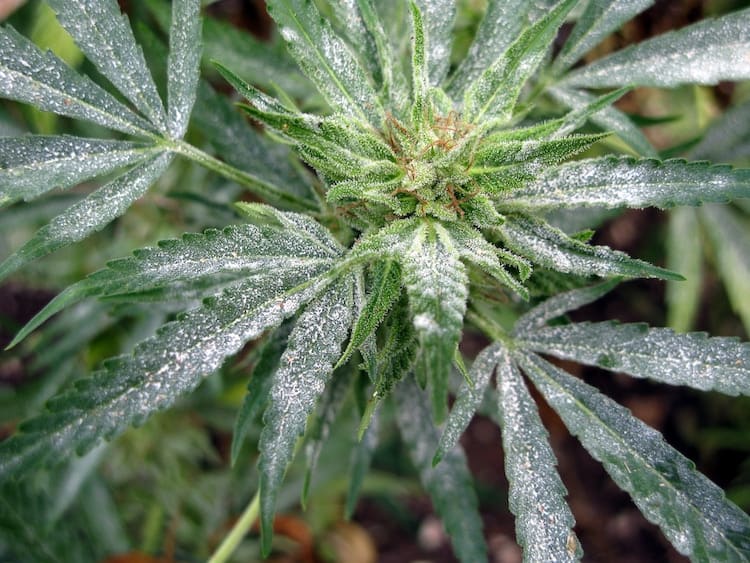
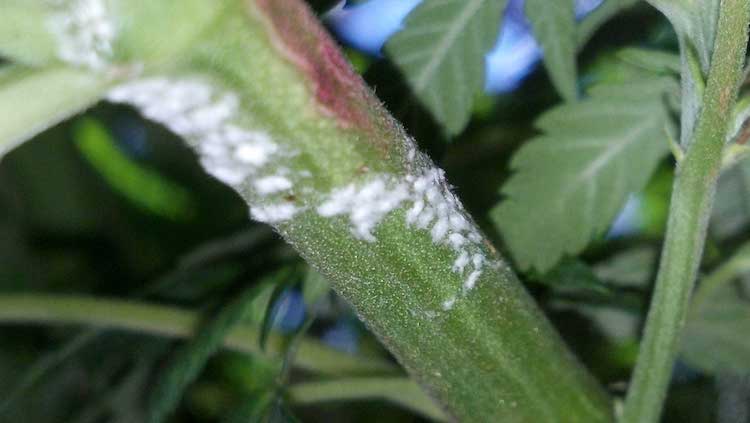
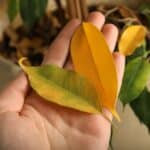
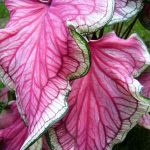
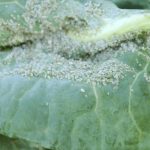
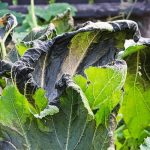
Dennis
I've noticed a white crust forming on the center frond of my cabbage palm as the frond fans out starts turning brown. As the new frond stalk grows out it two has a white crust covering the stem.